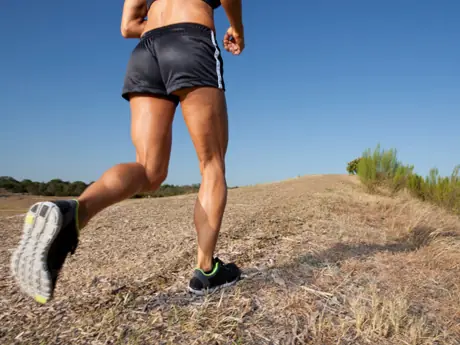
With so much demand on the body from vigorous training, triathletes need to include building balance as part of their training plans. All athletes need core, hip and shoulder stability and ankle, hip and thoracic (mid-spine) mobility. The stronger your structure becomes the less you become injured and the higher your performance will soar.
Endurance athletes seem to wait too long to correct their imbalances and issues. Whether it's an unstable lower spine, weak and "loose" hips and shoulders or a weak core, triathletes are destined for a physical therapy clinic. These six corrective exercises can be a huge assistance to correcting some major issues I see in a majority of athletes. These movements need to be part of a regular routine so you can build a balanced body, increase your flexibility and mobility, and decrease your chance of injury.
Remember when you get hurt you cannot train and when you cannot train you cannot improve. Train smart and perform these exercises daily.
Plank/Side Plank
This might be the most important exercise for triathletes. We need stability and stiffness in our lower lumbar region. If we are unstable our lower back will get unwanted movement, thus causing lower back pain. There are many repetitive movements in swimming, biking and running. You are continually doing the same thing over and over which can cause asymmetries in the body. Having a stable core means that your body will be able to release power throughout your hips and shoulders more efficiently. The plank effectively trains all of the stabilizing muscles in your body, from your shoulders, through your spine, to your hips and ankles.
The plank is a very simple but efficient exercise. You do not have to hold a plank longer than 45 seconds for it to be effective. Start out by holding a plank or side plank for 15 seconds and perform two sets. Build to 3 sets of 30 seconds each. Once you have mastered this progression, elevate your feet on a bench or box. You must maintain a perfectly straight body, braced abdominal region and stiffness through the exercise. Keep your elbows tucked into your sides and directly underneath your shoulders and keep your forearms straight out in front of you.
Y/T/W/L
Whether you are swimming, biking or running, triathletes need strong stability and posture of the upper back. If you have a weak posterior upper body, your body will learn to compensate through unwanted stress of the lower back, shoulders, hips and knees. These simple exercises will enhance shoulder stability, rotator cuff strength and scapular control. The scapula area (shoulder blades, rhomboids, rotator cuff, middle trapezius, posterior deltoid and subscapularis) are all stabilizing muscles of the upper back. If we lack strength in these small stabilizing muscles our posture will suffer thus causing stress and pain in other areas.
You need to be in a good athletic position while performing these exercises. Knees should be slightly bent and you should be bent over 45 degrees toward the ground. Remain strong and tight in the trunk area. You will make a Y, T, W and L with your arms to work the shoulder blade and rotator cuff. Start out by doing six repetitions for each exercise and do not use any weight. Build to 10 repetitions of each exercise.
Once you have done this set of exercises for at least four weeks, then you can move to 2-pound dumbbells. This exercise is meant for light weight so we can continue to strengthen the stabilizers. The heavier you go the more your deltoid will want to take over, thus defeating the purpose of these moves.
- 1
- of
- 3
About the Author
Justin Levine
Get ACTIVE on the Go


Couch to 5K®
The best way to get new runners off the couch and across the finish line of their first 5K.
Available for iOS | Android








Discuss This Article